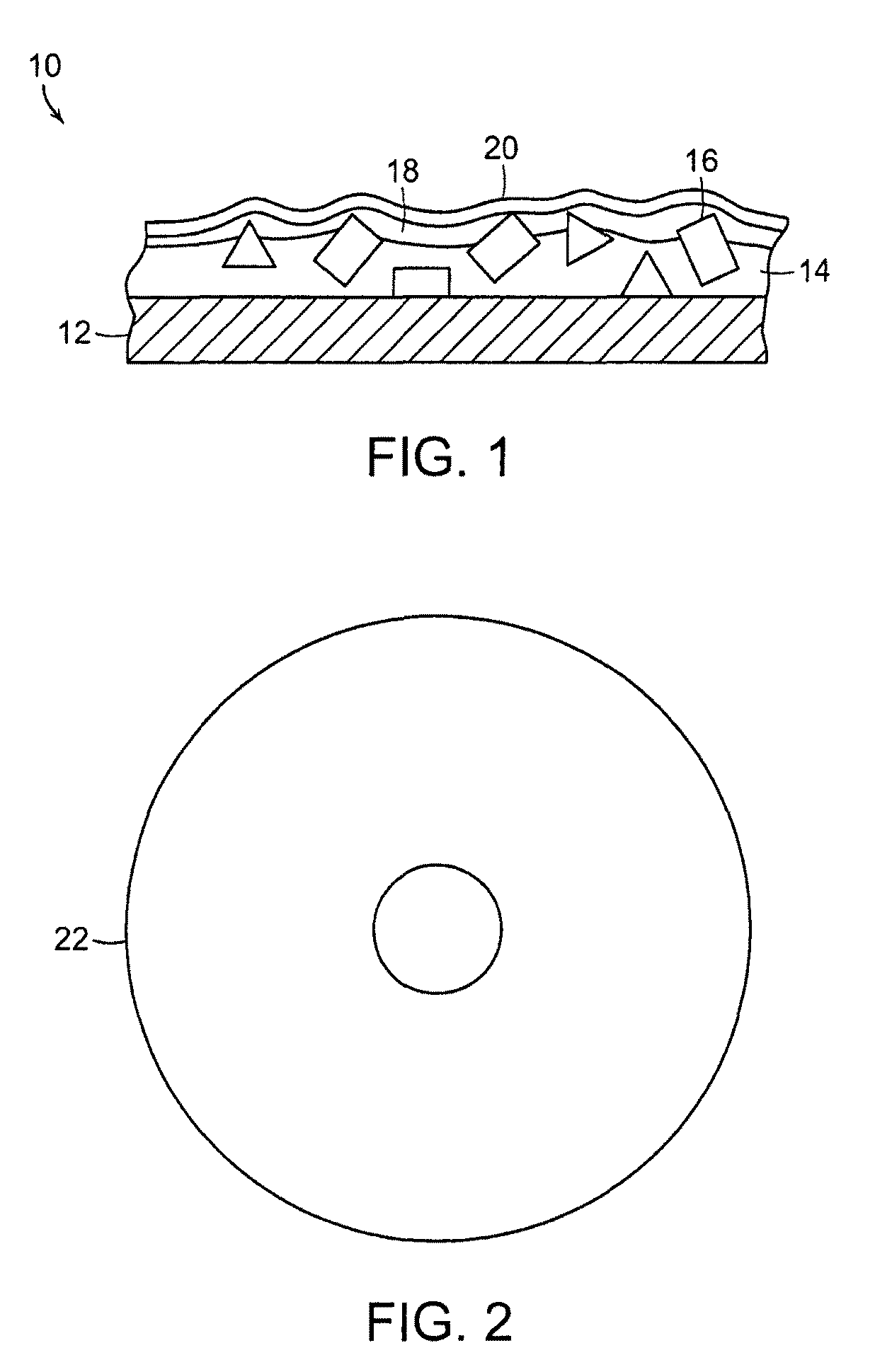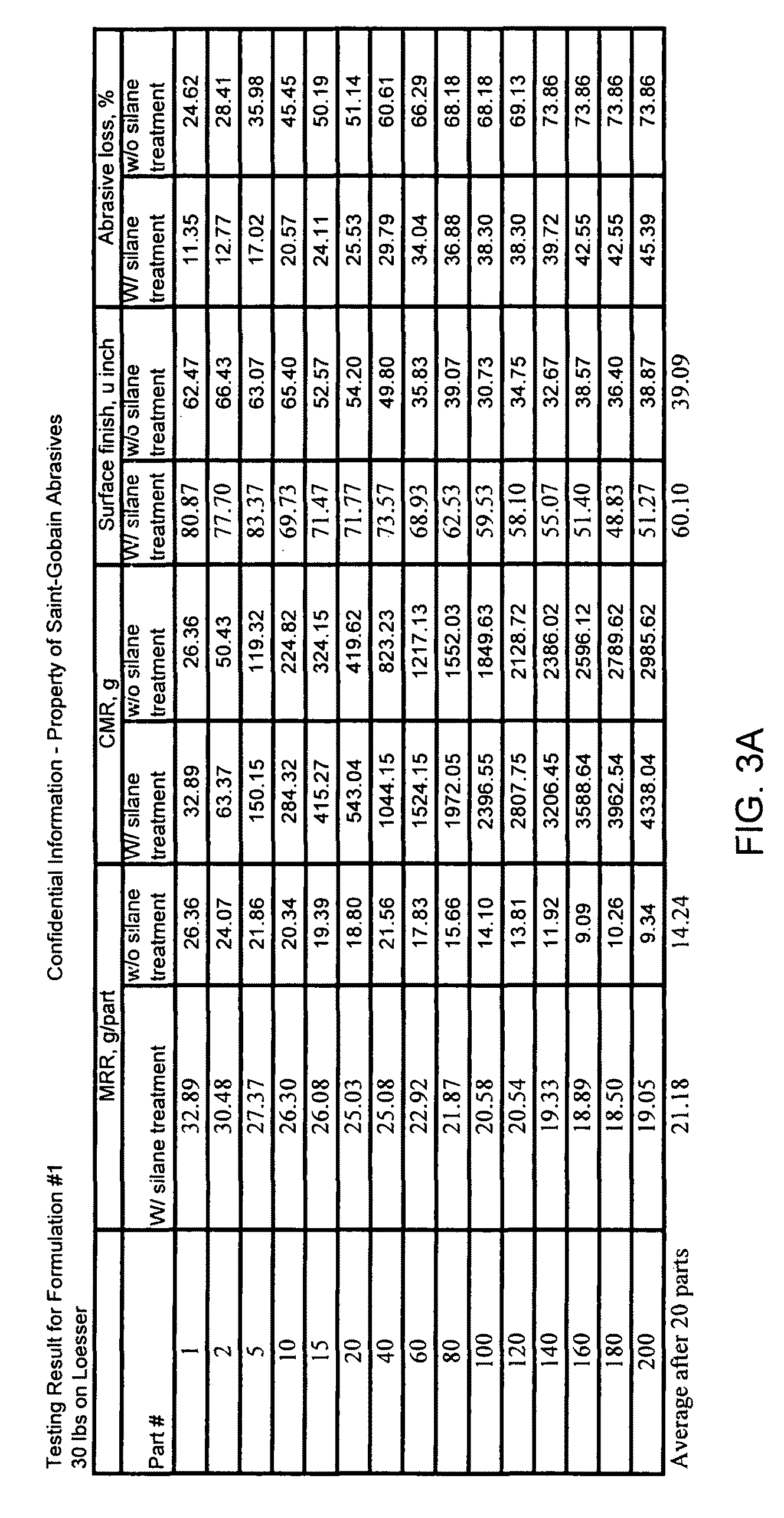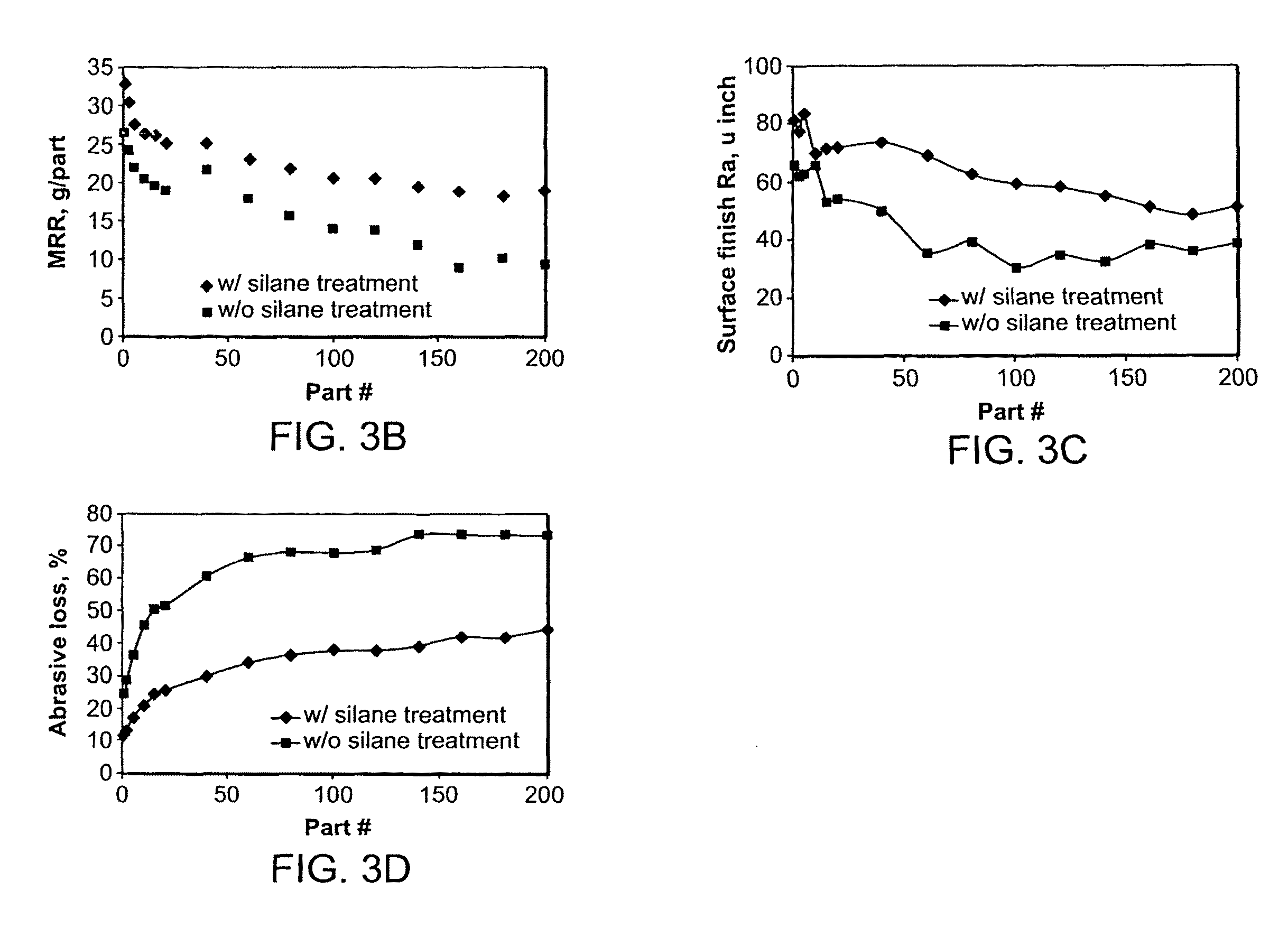Hydrophilic and hydrophobic silane surface modification of abrasive grains
a technology of hydrophobic silane and abrasive grains, which is applied in the direction of other chemical processes, lighting and heating apparatus, instruments, etc., can solve the problems of reducing the strength with which particles are held in place by the make coat, affecting the life of the abrasive product, and affecting the effect of wet grinding operations
- Summary
- Abstract
- Description
- Claims
- Application Information
AI Technical Summary
Benefits of technology
Problems solved by technology
Method used
Image
Examples
example 1
[0052]The following components were used for the preparation of the silane treated grain:[0053]Grain used was seeded sol-gel alumina grain[0054]A-174 silane→γ-methacryloxypropyltrimethoxy silane[0055]A-1100 silane→3-aminopropyltriethoxy silane[0056]DI water[0057]Isopropyl alcohol
[0058]Procedure for Silane Treatment of Grain:
[0059]The silane treatment of the abrasive grain included three steps, namely (1) the preparation of the silane solution, (2) mixing of the prepared silane solution with the abrasive grain and blending the mix, and (3) curing the subsequent silane treated grain at elevated temperature.
[0060]Step 1. The recipe for preparing the silane solution was as follows:
[0061]The silane solution was prepared by starting out with measuring 5.68 grams of the γ-methacryloxypropyltrimethoxy silane and 5.68 grams of the 3-aminopropyltriethoxy silane. The two silanes were mixed using a magnetic stirrer. To this mixture 101.25 grams of isopropyl alcohol was added with continued agit...
example 2
Methodology of Sample Preparation for Samples of Another Embodiment of the Invention
1. Surface Treatment for Abrasive Grain
[0099]1.1. Materials used:[0100]FRPL grain P800 grit size→obtained from Treibacher[0101]BFRPL grain P800 grit size→obtained from Treibacher[0102]A-174 silane→γ-methacryloxypropyltrimethoxy silane[0103]A-1100 silane→3-aminopropyltriethoxy silane[0104]A-1289 silane→Bis-[triethoxysilylpropyl] tetrasulfide[0105]Isopropyl alcohol[0106]Deionized water
All silanes procured from OSi Specialites Inc. Currently they can be procured from Momentive Performance Materials
[0107]1.2. Steps of Silane Treatment of Abrasive Grain:[0108]1.2.1. Step 1: the first step of the surface treatment of the grain involves preparation of the silane solution to be used for the treatment. Three silane treatments were used to treat both the BFRPL and FRPL P800 grit used in this experiment. The silane treatments differed in the type of silane chosen for the treatment and were namely, (1) A-174 sil...
PUM
| Property | Measurement | Unit |
|---|---|---|
| mean particle diameter | aaaaa | aaaaa |
| mean particle diameter | aaaaa | aaaaa |
| thickness | aaaaa | aaaaa |
Abstract
Description
Claims
Application Information
 Login to View More
Login to View More - R&D
- Intellectual Property
- Life Sciences
- Materials
- Tech Scout
- Unparalleled Data Quality
- Higher Quality Content
- 60% Fewer Hallucinations
Browse by: Latest US Patents, China's latest patents, Technical Efficacy Thesaurus, Application Domain, Technology Topic, Popular Technical Reports.
© 2025 PatSnap. All rights reserved.Legal|Privacy policy|Modern Slavery Act Transparency Statement|Sitemap|About US| Contact US: help@patsnap.com



